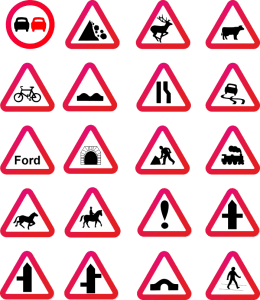The ‘I’m a good driver’ trap
Some of the worst ‘speeding’ I’ve seen has been by drivers of cars sporting regalia from ‘better driving’ organisations – Advanced Drivers! Information made available in 2007 showed that 1000’s of UK police drivers were caught by speed cameras – some of these highly trained drivers crashed. Safety is not just about driving skill; it’s more to do with driving attitude.
The ‘good driver’ trap installs beliefs that cause people to think they are infallible. But the problem is that impact kills good drivers too.
Advanced driver training courses will often teach ‘expert’ handling skills, the ability to ‘balance’ the car and reduce the risk of skidding, to smooth out gear changes, to brake on the ‘threshold’ thus gaining the maximum stopping effect, etcetera. But these skills are only safe when used in a safe environment.
It’s possible that you are a good driver – perhaps the best – but the problem is you are sharing the road with a whole load of lesser skilled drivers. If you drive too fast, you might be able to stop – but will they?
Take you good driving skills to a racetrack and enjoy a few real adrenalin packed laps in an appropriate environment.
Police survey
Northumbrian Safety Camera Partnership has published a list of some the excuses offered by drivers who have been caught by their speed cameras. They said that people for some reason believe that they will be excused their fine if their behaviour is explained by a wild story. They have compiled a list of their favourite excuses.
- I passed out after seeing flashing lights, which I believed to be UFO’s in the distance. The flash of the camera brought me round from my trance.
- I was in the airport’s flight path and I believe the camera was triggered by a jet overhead, not my car.
- I had a severe bout of diarrhoea and had to speed to a public toilet.
- There was a strong wind behind my car that pushed me over the limit.
- I had to rush my dying hamster to the vet
- I did not see the camera
- My friend had just chopped his fingers off and I was rushing the fingers to hospital.
- The vibrations from the surfboard I had on the roof rack set off the camera.
- There was a suspected case of foot and mouth and I had to rush to see the cow concerned.
- A violent sneeze caused a chain reaction where my foot pushed down harder on the accelerator.
- The only way I could demonstrate my faulty clutch was to accelerate madly.
- My foot slipped on the accelerator
- My brakes did not respond as I approached the camera
There are lots of ‘speed traps’ – traps that we set for ourselves by skewing our attitudes towards the way we drive. There are undoubtedly more than I will ever think of myself, excuses, delusions and fantasies, but I’ve listed a few more on the following pages.


